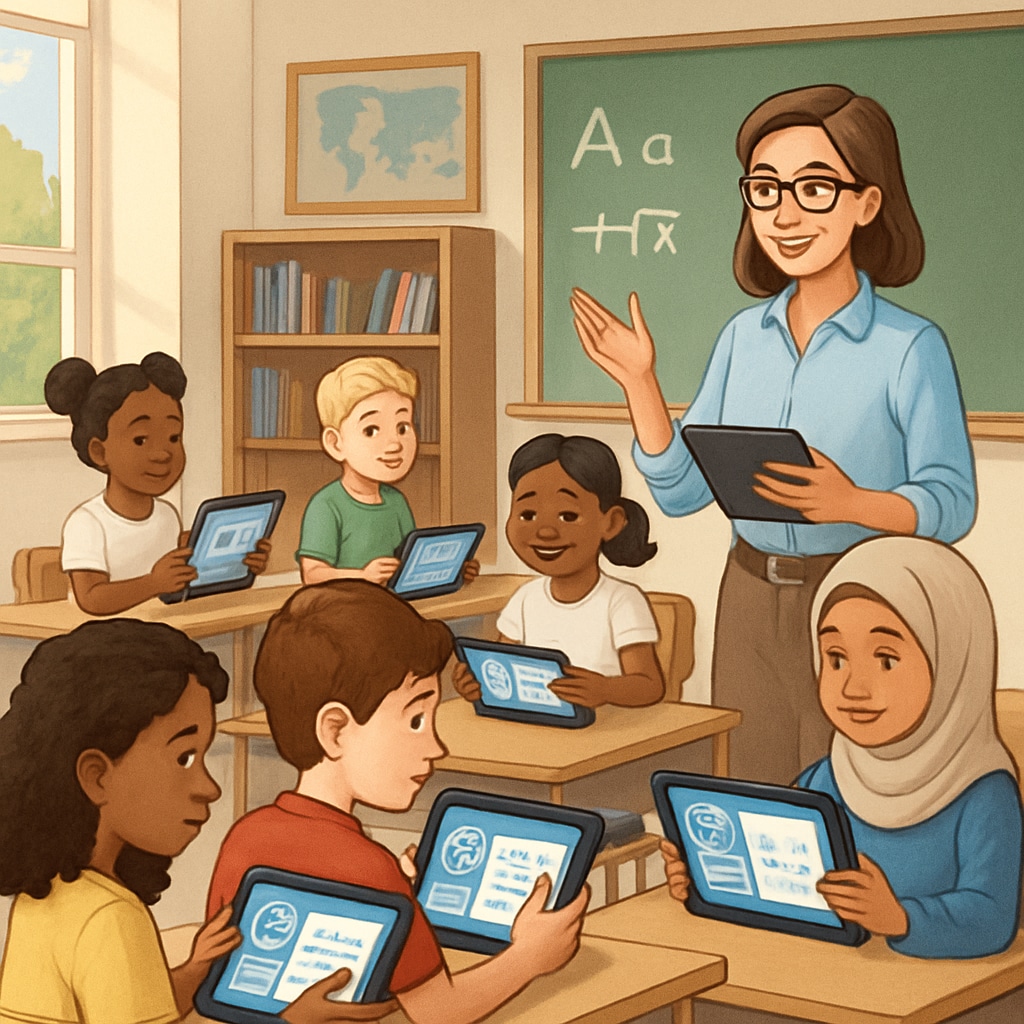The rapid advancements in artificial intelligence (AI) are revolutionizing the landscape of K-12 education. With tools like personalized learning platforms and intelligent assessment systems, AI is redefining how students learn and how teachers teach. These technologies are not just improving educational outcomes but are also addressing long-standing challenges in the education sector. As a result, understanding the potential of AI in K-12 education, its current limitations, and its future opportunities is crucial for educators and policymakers alike.

AI’s Role in Personalizing Education
One of the most transformative applications of AI in education is personalized learning. Unlike the traditional one-size-fits-all approach, AI-driven platforms adapt to the unique needs of each student. For example, adaptive learning systems analyze a student’s strengths and weaknesses in real time, tailoring content to suit individual learning paces and styles. This ensures that struggling learners receive additional support while advanced students are provided with more challenging material.
Platforms like DreamBox and Khan Academy are already leveraging AI to provide such personalized experiences. These tools use data analytics to determine the best instructional strategies for each learner. As a result, students are not only more engaged but also achieve higher retention rates.
Intelligent Assessment Systems: A Game Changer
Assessment has long been a cornerstone of education, but traditional methods often lack the ability to provide immediate and actionable feedback. AI-powered assessment systems are changing this by offering real-time insights into student performance. These tools can analyze complex data sets, including written essays and problem-solving techniques, to provide nuanced evaluations.
For teachers, this means less time spent grading and more time focusing on instructional strategies. For students, intelligent assessments provide detailed feedback that helps them identify areas for improvement. Tools like Gradescope and Turnitin are excellent examples of how AI is streamlining the evaluation process in classrooms.

Challenges in Implementing AI in Education
Despite its immense potential, integrating AI into K-12 education comes with its challenges. One of the primary concerns is data privacy. AI systems require large amounts of student data to function effectively, raising questions about how this data is stored and used. Additionally, there is the issue of equitable access. Not all schools have the resources to implement advanced AI technologies, which could exacerbate existing educational inequalities.
Another challenge is the skepticism among educators. Many teachers fear that AI might replace their roles, though experts argue that AI is designed to assist, not replace, human educators. Building trust and providing adequate training for teachers to use AI tools effectively are critical steps toward overcoming these barriers.
The Future of AI in K-12 Education
Looking ahead, the integration of AI in education is expected to become more seamless and widespread. Future AI tools may include virtual tutors capable of providing 24/7 assistance, immersive learning experiences using augmented reality (AR), and AI-driven career counseling platforms tailored to students’ skills and interests.
Moreover, as AI technologies become more affordable, they could bridge the gap between underfunded and well-funded schools. Initiatives aimed at open-source AI tools for education could make advanced learning resources accessible to a broader audience. These advancements will not only democratize education but also prepare students for a future dominated by technology.
In addition, collaborations between tech companies, educational institutions, and governments will play a pivotal role in shaping the AI-driven education landscape. For example, partnerships like Microsoft’s AI for Education program aim to empower educators with the tools they need to succeed in this evolving environment.
Conclusion
Artificial intelligence is more than just a technological trend—it’s a transformative force reshaping the future of K-12 education. From personalized learning to intelligent assessment systems, AI is addressing some of the most pressing challenges in education while opening up new possibilities for innovation. However, its implementation requires careful consideration of ethical concerns, equitable access, and educator support.
As we move forward, the collaboration of stakeholders across the education and technology sectors will be crucial. By embracing these changes, we can create a more inclusive, efficient, and inspiring educational experience for students around the world.
Readability guidance: This article uses clear and concise language, short paragraphs, and frequent subheadings to improve readability. Lists and examples are included to summarize key points, ensuring accessibility for a broad audience.


